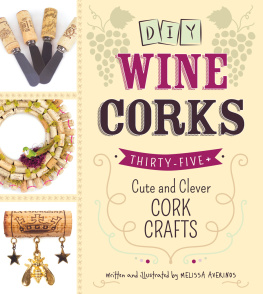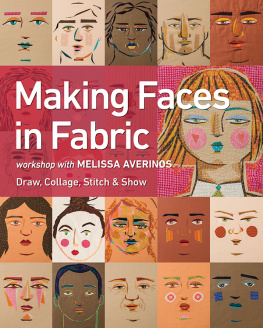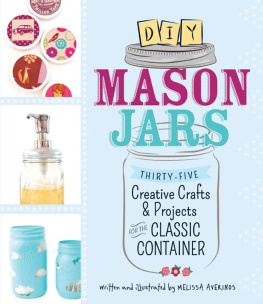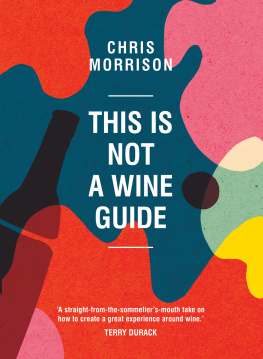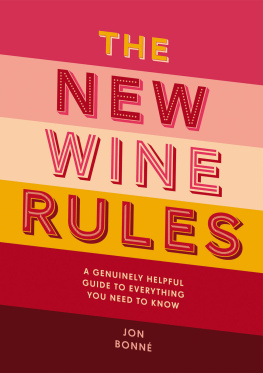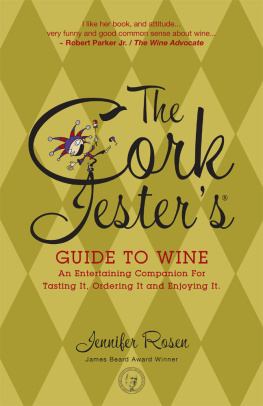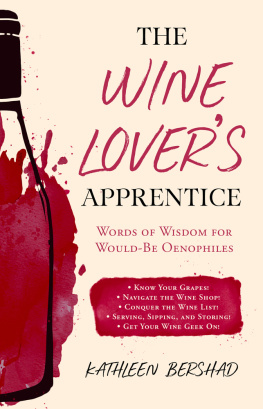DIY Wine Corks
Thirty-five+ Cute and Clever Cork Crafts
Written and Illustrated by Melissa Averinos

Avon, Massachusetts
Contents
Introduction
Have you saved cool or meaningful wine corks over the years, either as mementos or in case you ever thought of something to do with them? Well, their time has come. You can use that cork collection to make all sorts of fun projects to display in your home, wear as an accessory, or give as a thoughtful homemade gift. Plus, youre recyclinginstead of throwing away your corks, put them to good use. Drinking wine just got even more fun!
One of the best parts of crafting with wine corks is that theyre so easy to work with. Most of the projects in this book use simple cutting, gluing, and painting techniques with everyday crafting materials. Kids can even join in the fun in Part 5. Plus, its not hard to find corksdont worry, you can buy them in bulk if your personal stash runs out.
How to Use This Book
Ive divided this book into six parts. The first, Cork Talk, gives you some background about different types of corks and how to get more of them (besides drinking more wine). Youll also learn about some tools and techniques youll see later in the book. The other sectionsEntertaining Accents, Home Dcor, Accessories, Toys, and Celebrationsshow how you can use your corks for a wide variety of craft projects. Some of these projects call for a little more crafting than otherswhen youre making necklaces, for example. But dont be intimidatedmy instructions are jumping-off points, and sometimes mess-ups are just happy accidents that create a whole new look!
The most important thing you can do with this book is have fun. So go to it!
Part 1
Cork Talk
Crafting with wine corks is a relatively simple endeavor, but youll need a little background information before you dive in. In this part, youll learn about the different types of corks you can find, and how to get more if you need a break from drinking wine! Youll also get a quick rundown of the everyday tools and techniques youll be using for the crafts in this book.
Corks 101
What is cork, anyway? Cork is tree bark! Most cork that you see is bark from the cork oak, an evergreen oak tree that grows in southwest Europe and northwest Africa. The cork oaks Latin name is quercus suber, and if you even make a half-hearted attempt at pronouncing that, youll notice that the first word sounds kind of cork-y. Quercus actually means oak, though; its the suber part that means cork.
Cork is a renewable resource, which means when you are crafting with corks, you are crafting green, baby! In fact, the cork oak is not harmed at all by harvesting, which is done by hand with an axe by trained extractors. The bark grows back after nine to twelve years, and can be harvested about twelve times in the life cycle of the tree.
Cork is elastic and nearly impermeable, which is why vintners have used it to seal wine bottles since the mid-1700s.
All Wine Corks Are Not Created Equal
If you drink a lot of wine, you may have encountered several different kinds of corks. The type is chosen by the manufacturer for many different reasons, including quality, price, and how long the wine is aged. Luckily, there are ways to craft with each type! Here is a not-so-scientific guide to the different types of wine corks you may come across:
- Natural corks: A solid piece in a chunk.
- Agglomerated corks: Granulated cork mixed with a binder and formed; may or may not have solid cork discs glued to the top and bottom.
- Aglica corks: A kind of agglomerated cork that is made with a finer part of the cork bark; very uniform and dense. Often has a slight facet, or beveled edge, on the top and bottom.
- Synthetic corks: Plastic compounds created to look and pop like cork.
The projects in this book use all kinds of corks, even synthetic! Crafting with corks is very forgivingif you have corks that are in great shape, you can feature them as-isif not, you can dye, cut, or reshape them! Everyone has her own personal preference. (Personally, I like the irregular texture and variations in color that you find in natural corks.) All that matters is that you like the finished product.
Organizing Your Corks
If you have a large collection of corks, it can be kind of overwhelming to paw through them all to get the corks you want for each project. I suggest you separate them into categories ahead of time so you can easily grab what you need when youre ready to craft.
These are the categories I separate my corks into, and how I like to use them:
- Natural with cool pictures: Great to feature, like in the jewelry projects. Im protective of these and would not use them to practice a technique on. They are special!
- Natural with cool text: Work well in many projects, such as the Cork Board Picture Frame or Retro Sunburst Mirror (for both crafts, see Part 3). I use these more often than those with pictures, but I still save them for special uses.
- Natural with boring text: If I look at these and think, meh, I use them for projects like the wreath or birdhouse, when you need lots of corks but dont want to use your favorites. Theyre also good for practicing techniques.
- Natural with printed ends: Cool to feature in projects that showcase the ends, such as the ring and trivet projects.
- Agglomerated (which almost always have boring-looking text, so they dont need to be sorted out within the category): Good for practicing a project with, painting or dyeing, or when you use the cork as just a material, rather than featuring the fact that its a wine cork (such as in the Heart Decoration, Folk Art Flag, and Peace Decoration, see Part 6).
- Synthetic: These work great for the Simple Stamps project (see Part 5)but otherwise, stick to the natural cork variations.
These are just my preferences. The more you get to know your collection and the different ways to use corks, the more youll develop your own styles and preferences.
Basic Cork Crafting Techniques
Most of the projects in this book require some simple crafting skills. No need to be intimidatedthey are all easy to master. Read on for tips on each technique.
CUTTING AND SANDING
I had the best results using a small woodworkers coping saw. A coping saw is a thin-bladed tool that is shaped like the letter P. You can find one at a hardware store, or online. Use a block of wood under the cork to give you some leverage and height, and go slow.
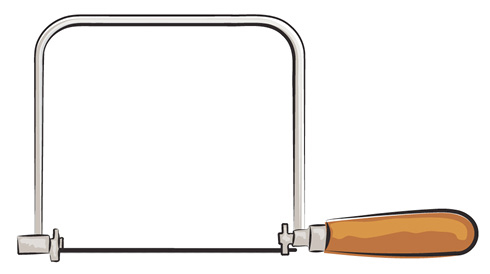
Another way to cut corks is with an X-ACTO knifea very sharp, razor-like knife thats great for detail work (such as the Simple Stamps project, see Part 5). Theyre available at craft and office supply stores, hardware stores, and online.

